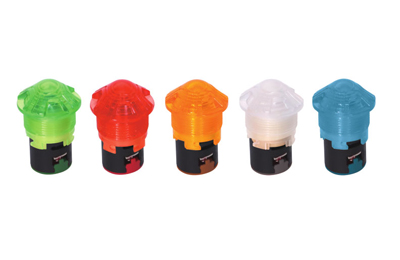What Rating Is an Explosion-Proof Light?
Explosion-proof lights, also known as hazardous location lights or hazardous area lights, are designed to be used in environments where there is a risk of explosion due to the presence of flammable gases, vapors, dust, or combustible fibers. These lights are constructed to prevent the ignition of potentially explosive atmospheres by containing any sparks, arcs, or heat generated by the lighting equipment. The rating or classification of an explosion-proof light typically follows various standards and classifications depending on the specific hazardous location.
The most common standards and classifications for explosion-proof lights include:
Class/Division System (North America):
In North America, explosion-proof lights are classified based on the Class/Division system defined by the National Electrical Code (NEC). The classification consists of Class (the type of hazardous material) and Division (the likelihood and duration of the hazardous material's presence). For example, Class I, Division 1 (CI/D1) indicates that the light is suitable for use in areas where flammable gases or vapors are present continuously or frequently.
Zone System (International):
In many international standards, such as the IEC (International Electrotechnical Commission) standards, explosion-proof lights are classified using a Zone system. Zones are designated based on the likelihood and duration of the presence of explosive atmospheres. For example, Zone 0 is an area where an explosive atmosphere is present continuously, while Zone 1 is an area where it is likely to occur occasionally.
Can I Leave My Personalized Electric Blanket On Overnight?
ATEX Directive (European Union):
In the European Union, explosion-proof equipment, including lighting, is often certified under the ATEX Directive. ATEX certification specifies that the equipment is suitable for use in potentially explosive atmospheres. It includes two categories: Category 1 (for Zone 0) and Category 2 (for Zone 1).
IP (Ingress Protection) Rating:
Explosion-proof lights may also have IP ratings, which indicate their degree of protection against the intrusion of solids and liquids. For hazardous locations, these lights typically have a high IP rating to prevent the entry of dust and moisture.
Temperature Class:
Explosion-proof lights are assigned a temperature class, which specifies the maximum surface temperature the equipment can reach without causing ignition. Common temperature classes include T1 (the lowest maximum surface temperature) to T6 (the highest maximum surface temperature).
It's important to note that the specific rating or classification of an explosion-proof light will vary depending on its intended use and the hazardous materials present in the environment. When selecting an explosion-proof light, it is crucial to consult the relevant safety standards and regulations applicable to your region and industry to ensure compliance and safety. Additionally, these lights are typically certified by accredited organizations or agencies to confirm their compliance with safety standards.
None


Comments